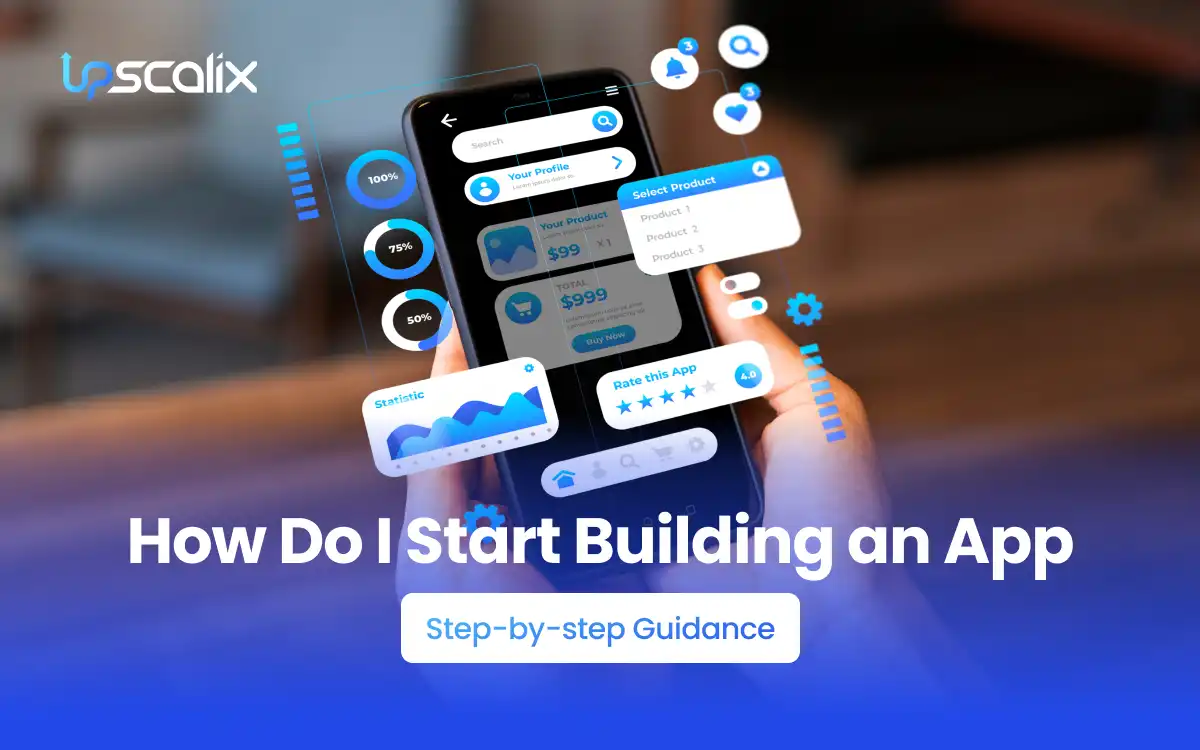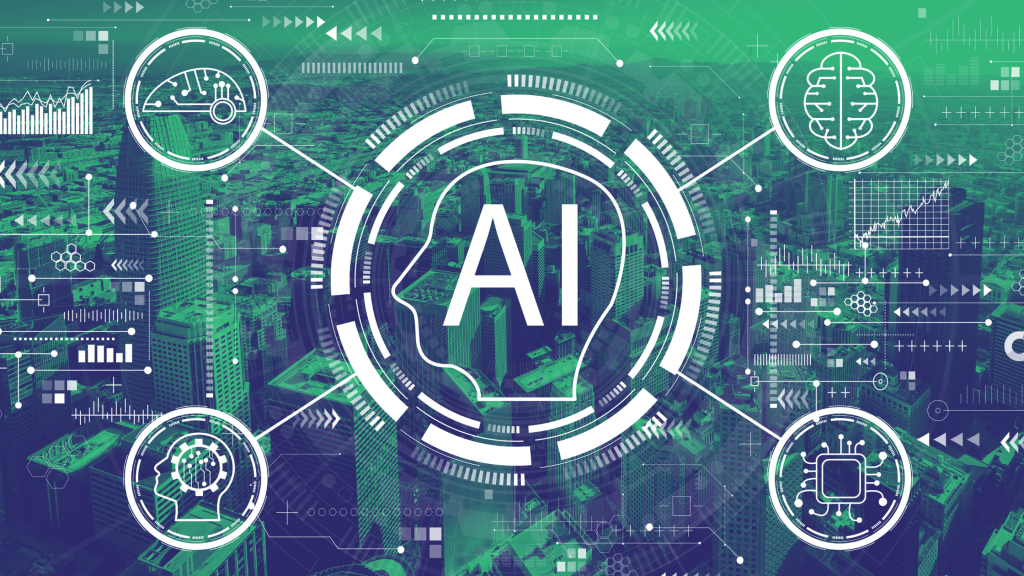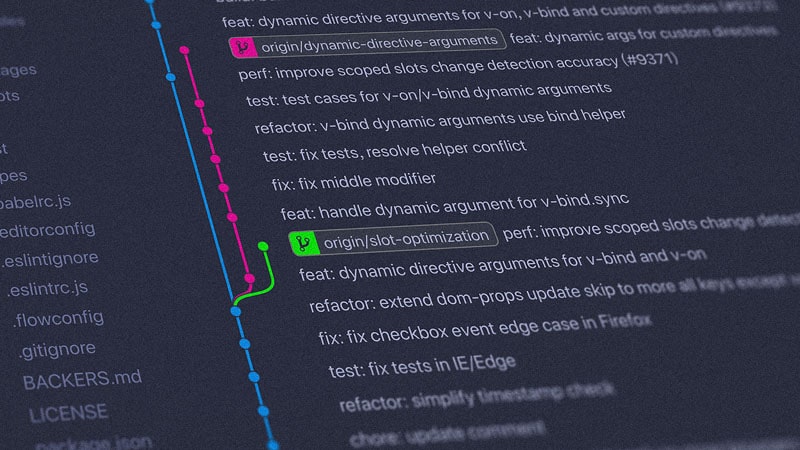Introduction
Welcome to the digital revolution, where everything is reachable through the internet. We know that mobile apps have become the driving force behind how we communicate, shop, work, and even entertain ourselves. From ordering groceries with a few taps to managing our finances, mobile apps have seamlessly integrated into every aspect of our lives, making tasks more convenient and accessible.
But what exactly goes into creating these apps? How to start an app for your business? How much does it cost to start a mobile app? That’s where this comprehensive guide comes in. Whether you’re an aspiring entrepreneur with a groundbreaking idea or a business looking to expand its digital footprint, this guide will walk you through the steps to kickstart your app journey and transform your vision into a tangible reality.
Let’s dive in and unlock the potential of mobile app development together!
What is Mobile App?
Mobile apps have revolutionised how we interact with technology, offering unparalleled convenience and functionality at our convenience. Imagine having the power to access services, information, and entertainment wherever you go without being tethered to a desktop or laptop.
But mobile apps aren’t just convenient; they’re game-changers for businesses. Having a mobile app is no longer a luxury but a necessity for staying competitive. It’s a direct line of communication between businesses and their customers, fostering deeper engagement and loyalty. Whether it’s a retail app offering exclusive discounts, a banking app providing seamless transactions, or a fitness app tracking health goal, mobile apps have become indispensable for businesses across industries.
Moreover, thanks to advanced analytics tools, mobile apps offer insights into user behaviour and preferences. Businesses can leverage this data to tailor their offerings, personalise user experiences, and drive customer retention. In short, mobile apps have transformed how we live, work, and interact with brands, making them an essential part of today’s digital landscape.
Upscalix is here to help your business build a mobile app tailored to your needs. But how do you start an app, and how much does it cost? Click the button below to discuss with the expert!
[button link=”https://dev.upscalix.upxyz.dev/contact” type=”big” color=”lightblue” newwindow=”yes”] Calculate your mobile app cost here[/button]
Planning Your App
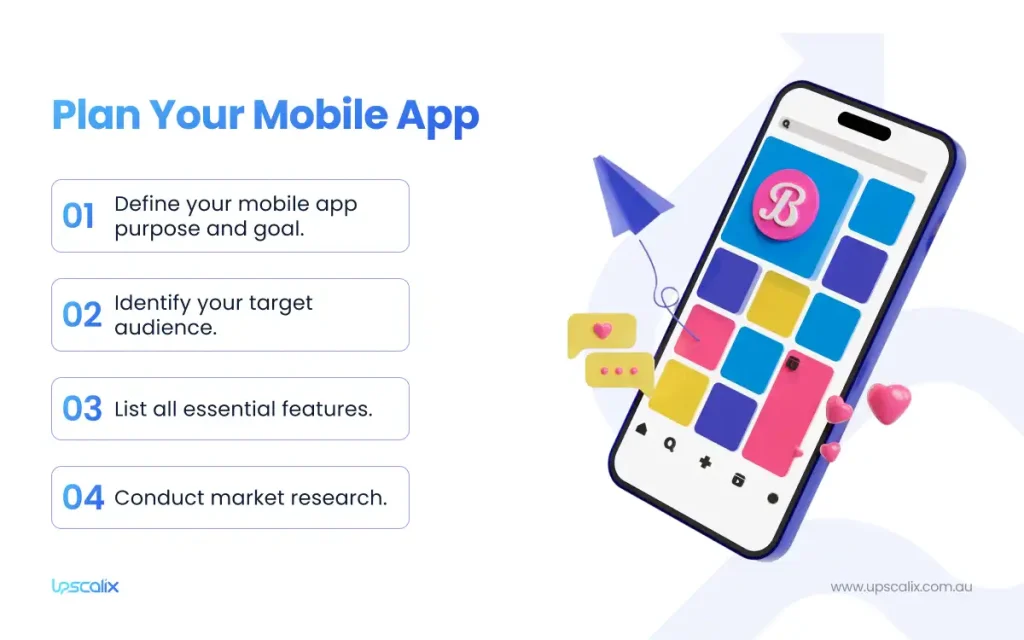
Embarking on the app development journey is akin to setting sail on uncharted waters – meticulous planning is your compass to navigate the vast expanse of possibilities.
First and foremost, define your app’s purpose and goal. Is it a tool to streamline processes, a platform to deliver valuable services, or a conduit to foster meaningful connections? Understanding your app’s raison d’être is akin to plotting the North Star in your navigational chart—it guides every decision and action.
Next, identify your target audience. Do some research to understand their needs, desires, pain points, and preferences. Your apps should satisfy those problems.
Now, let’s talk about features. Consider the essential features indispensable to your users and differentiate your app from others in the market. It’s not about packing your ship with every bell and whistle but strategically selecting the features that add value and enhance the user experience.
But before you start with the mobile app development, conduct thorough market research to navigate the competitive landscape and identify uncharted territories ripe for exploration. Analyse your competitors’ strengths and weaknesses, spotting opportunities to raise your app’s flag high and stake your claim in the digital realm.
Designing Your App
To start with the app design, you must understand User Interface (UI) and User Experience (UX).
User Interface (UI) design is like the artist’s palette, painting a visual landscape that draws users into your app’s world. It’s not just about making things look pretty; it’s about crafting an experience that resonates with users emotionally. From colour schemes and typography to icons and layout, every element contributes to your app’s overall aesthetic appeal and usability.
User Experience (UX) design is the guiding star that illuminates the path for users, ensuring smooth navigation and intuitive interactions. Think of it as the choreographer orchestrating a dance of delight, guiding users seamlessly from one screen to the next. By understanding user behaviours, preferences, and pain points, UX design creates an effortless and enjoyable journey.
But designing an app isn’t just about aesthetics and functionality; it’s about empathy – putting yourself in the shoes of your users and designing with their needs and desires in mind. It’s about creating moments of delight, surprise, and joy that leave a lasting impression. Whether it’s a delightful animation, a clever micro-interaction, or a thoughtful gesture, every detail shapes the user experience.
Developing Your App
Coding is the heart and soul of app development. Java and Kotlin are your trusty programming languages for Android mobile app development. With their rich libraries and toolkits, you can craft immersive experiences that captivate users and propel your app to new horizons.
Meanwhile, you can use Swift for iOS app development. Swift’s modern features and intuitive syntax make for smooth sailing, allowing you to focus on crafting elegant solutions and delightful user experiences.
Whether you’re charting a course for Android or iOS, there are myriad tools and frameworks available to help you navigate the challenges of app development. From powerful IDEs to robust testing suites, these tools are your compass and sextant, guiding you toward your destination with precision and confidence.
How Much Does It Cost to Start an App
Cost is a crucial consideration in app development. Factors such as complexity, features, and platform compatibility influence the overall cost of building an app. From development and design to maintenance, budgeting effectively is essential for a successful app launch.
In Australia, on average, an app will cost between $50,000 to $100,000. However, larger companies and corporations looking to build an app can spend $100,000 to $300,000.
[button link=”https://dev.upscalix.upxyz.dev/contact” type=”big” color=”lightblue” newwindow=”yes”] Click here to estimate your business app cost. [/button]
Case Study: Time Driver
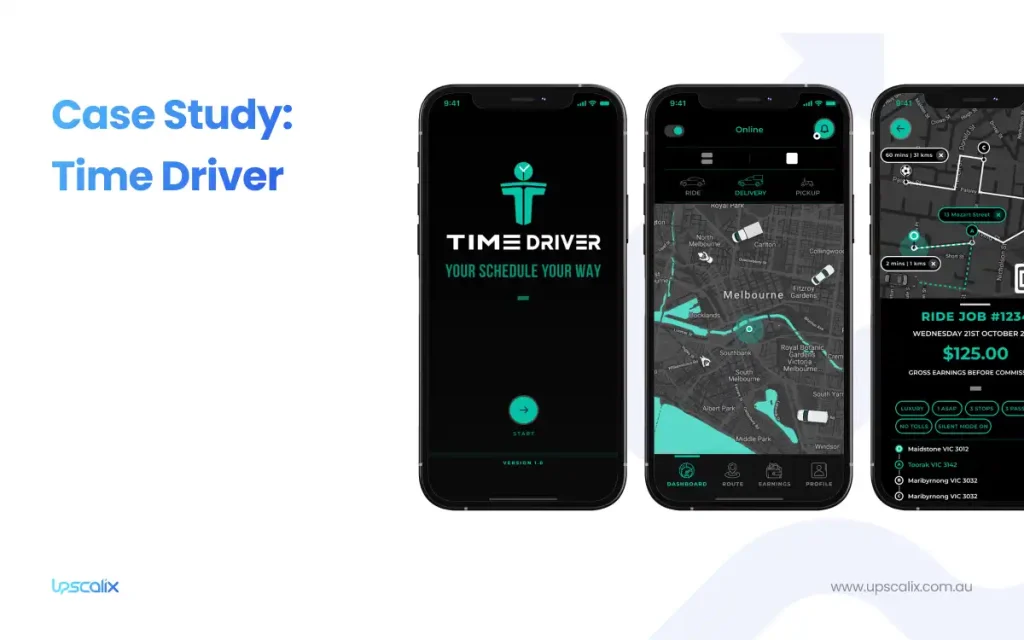
Explore real-world examples from us, Time Driver, an app that simplifies the gig economy, offering drivers the freedom of choice. Learn from success stories and adapt proven strategies to your app development journey.
Time Driver’s founder wanted things to be better. He was tired of how ridesharing worked and wanted to find a way to make it easier and earn more money. He tried delivering packages and rides to earn more, but it didn’t work as well as he hoped. Then, he got the idea for an app. He wanted to make an app where rideshare drivers could make more money for each hour they worked and have a better time while driving. The goal is to give rideshare drivers a tool to help them earn more money and make their work easier.
Upscalix made an app for iPhone and Android. It helps both drivers and riders. Also, there’s an easy-to-use control panel for the Time Driver team to manage rides well. Our team connects the app with Google Maps so drivers and riders can see their location in real-time. This makes rides go smoothly and without any problems.
For Time Driver, our team at Upscalix uses React Native, Node.js, React JS, Firebase, and Google Maps.
Conclusion
Starting an app is an exhilarating journey filled with opportunities for innovation and growth. By following this comprehensive guide, you can lay the foundation for a successful app venture. Take the first step, harness the power of mobile app development, and realise your app ideas. Investing in app development is not just about staying competitive; it’s about setting the stage for business growth and success.
Contact our team at Upscalix now to start your mobile app journey.
